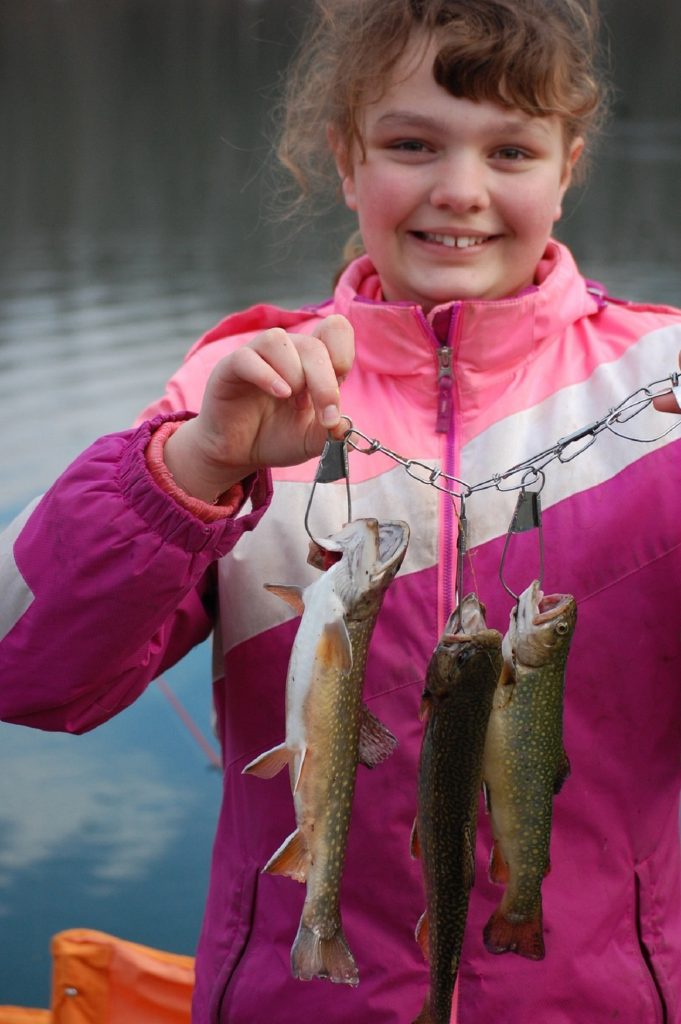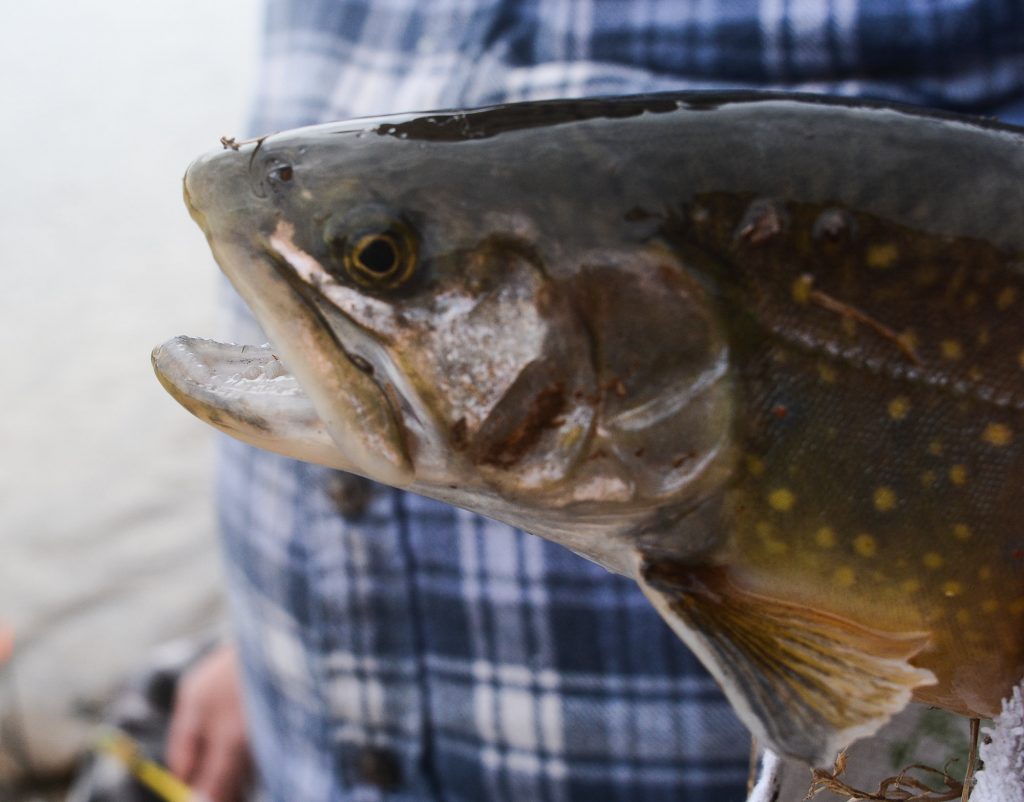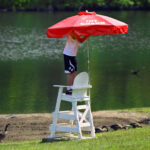BY DOYLE DIETZ
Ponds and small lakes lack the flowing water of streams, but for trout anglers with patience and who are properly equipped, setting up shop along their banks is a viable option for opening day.
By their nature, trout are constantly roaming and, because of their independence, typically do not school for protection or predation. Instead, they usually are constantly on the move and actively feed.
Before setting up a folding chair or stool, remember some bank locations are better than others, such as being near inlets and outlets of rivers or streams that introduce fresh sources of cold water. These flows are most active in spring and fall and are considered primary locations when fishing a pond or small lake.
Not to fret, however, because as trout continue to keep circling the shoreline, it is just a matter of time until they pass by. Locating ledges and drop-offs allows for casting one rod with bait and leaving it in the water and using another rod to cast and retrieve.
During colder water temperatures found in the spring, trout feed closer to the surface and near the shore. In these conditions target the top half of the water, and a live bait float with a slip bobber is a rigging tactic that allows setting an exact depth to present the bait.
It is the nature of a boat angler to cast close to shore and shore anglers to cast out to deeper water, but the one undeniable advantage of fishing from shore is having room for a small grill. And, burgers and hot dogs beat cold sandwiches every time.

DOYLE DIETZ / CONTRIBUTING PHOTOGRAPHER
Rose Russell of Tamaqua set the early pace with a stringer of three trout while fishing with her brother, Ryan, and father, Richard, at Whippoorwill Dam at South End Field and Stream, Frackville, on the opening day of the 2019 Pennsylvania Fish and Boat Commission’s Southeast Region trout season.
2020 Trout Season Fast Facts
- Statewide opening day: Saturday, April 18, 8 a.m.
- Fishing hours: After the 8 a.m. opener, 24 hours a day statewide through Labor Day.
- Minimum size: Seven inches.
- Creel limits: Regular season — five, combined species, opening day through Labor Day. Extended season — three, combined species, day after Labor Day through Dec. 31. Other rules apply for Special Regulation Areas listed in “Summary of Pennsylvania Fishing Laws and Regulation,” distributed with fishing licenses.
- Eligibility: Trout anglers ages 16 and older must have a fishing license and Trout/Salmon Stamp or Combination Trout/Salmon Stamp-Lake Erie Permit, which is needed to fish for trout, salmon and steelhead in Lake Erie and its tributaries. Licenses, stamps and permits must be signed in ink and displayed on an outer garment, and anglers must be able to provide another form of identification upon request of a Pennsylvania Fish and Boat Commission waterways conservation officer.
Area PFBC Approved Trout Waters
Berks County: Allegheny Creek, Antietam Creek, Antietam Reservoir, Furnace Creek (Robesonia), Hay Creek, Kaercher Creek Dam, Kistler Creek, Little Lehigh Creek, Little Swatara Creek, Maiden Creek (confluence with Kistler Creek in Kempton downstream to dam in Lenhartsville), Manatawny Creek, Mill Creek (tributary to Sacony Creek), Mill Creek (tributary to Schuylkill River), Mill Creek (tributary to Tulpehocken Creek), Northkill Creek, Ontelaunee Creek (Spring House Road Bridge, Route 4024 downstream to mouth), Perkiomen Creek, Pine Creek (tributary to Maiden Creek), Sacony Creek (Bowers Road downstream to Route 222 Kutztown by-pass), Scotts Run Lake, Spring Creek, Swamp Creek (Chestnut Hill Road, Route 2001 downstream to mouth in Morgantown), Tulpehocken Creek, Willow Creek, Wyomissing Creek (headwaters downstream to Route 222)
Carbon County: Lizard Creek, Mahoning Creek
Dauphin County: Armstrong Creek, Clark Creek, Mahantango Creek, Manada Creek, Middletown Reservoir, Pine Creek, Powell Creek, Rattling Creek, South Fork Powell Creek, Stony Creek, West Branch Rattling Creek, Wiconisco Creek
Lehigh County: Cedar Creek (Lake Muhlenburg outflow downstream to mouth), Coplay Creek, Jordan Creek, Kistler Creek, Laurel Run (South Branch Saucon Creek), Lehigh Canal (from first lock upstream of Monocacy Creek downstream to Monocacy Creek Crossing), Little Lehigh Creek, Monocacy Creek, Ontelaunee Creek, Swabia Creek, Switzer Creek, Trout Creek (Big Trout Creek, Slatington)
Schuylkill County: Bear Creek, Deep Creek, Little Catawissa Creek, Little Mahanoy Creek, Little Schuylkill River (From confluence with Locust Creek downstream to confluence with Panther Creek, preseason and in-season; and from mouth upstream 1.1 miles to Port Clinton, in-season only), Lizard Creek, Locust Creek, Locust Lake, Lower Little Swatara Creek, Mahantango Creek, Mahoning Creek, Pine Creek (tributary to Little Schuylkill River), Pine Creek (tributary to Mahantango Creek), Pine Creek (tributary to Schuylkill River), Rabbit Run Reservoir (off East Valley Road southwest of Tamaqua), Sweet Arrow Lake, Tuscarora Lake, Upper Little Swatara Creek, Whipoorwill Dam
Snyder County: West Branch Mahantango Creek
Northumberland County: Mahantango Creek
Dietz is parliamentarian of the Pennsylvania Outdoor Writers Association. Contact him at outdoors@republicanherald.com.



